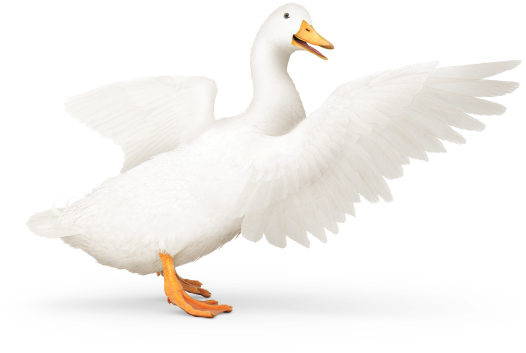Term and permanent life insurance can help protect loved ones financially in case of your untimely passing. Although both offer your beneficiaries a death benefit, each policy differs in several ways. Aflac offers both term and permanent life insurance policies that can give policyholders and their loved ones peace of mind. This article will explain how each policy works and discuss their differences in terms of premiums, coverage length, and wealth-building capabilities.
Table of Contents
Term life insurance is a type of plan that helps provide temporary coverage for a fixed period. Term lengths generally range from 10 to 30 years. If you pass away while the policy is active, the insurer pays your beneficiaries the death benefit. Keep in mind that the policy will expire if you outlive it. You’ll have to renew your policy if you still want coverage.1 Aflac offers term life insurance with various term lengths and death benefits to help fit your needs.
Here are some types of term life insurance to choose from:2
Level term life insurance has a fixed death benefit and premiums for the policy’s duration. This helps make level term life insurance the most predictable types of term life insurance.
Decreasing term life insurance offers a death benefit that decreases over time. Premiums also decrease over time. As a result, this policy may work well if your financial obligations shrink. For example, you may need less coverage if your children graduate college and begin working full-time.
Renewable term life insurance generally allows you start a new term life insurance policy at the end of your current term without a medical exam. This helps guarantee term life insurance coverage as you get older and avoid medical exams if you find them inconvenient. However, premiums will increase once you renew the policy.

Don’t wait until it’s too late. Help cover yourself and your family with coverage from Aflac.
Get StartedPermanent life insurance is a type of plan that can offer coverage for life if you continue to pay premiums. As a result, these policies are more expensive. Permanent life insurance can also accumulate cash value with each premium payment. This cash value can grow tax-deferred at a particular rate depending on the policy type. You can then borrow against or withdraw from it when it grows enough. Aflac offers a common type of permanent life insurance, whole life insurance, that can help give you lifelong coverage that suits your needs.
Here are some permanent life insurance policies you can choose from:
Whole life insurance can offer a fixed death benefit and premiums for your entire life. Furthermore, the cash value may grow at a fixed but guaranteed rate based on prevailing interest rates. These features can make whole life insurance one of the most predictable types of permanent life insurance.
Universal life insurance can let you adjust premiums and death benefits, offering increased flexibility. For example, you can lower your premiums by decreasing your death benefit or secure a larger death benefit by increasing your premiums. The cash value can grow based on market rates. Additionally, universal life insurance generally costs less than whole life insurance.3 However, this can vary based on your circumstances and your insurer.
Final expense insurance is a permanent plan designed to help cover funeral costs, burial expenses, and other end-of-life items. It has a small death benefit but offers reasonable premiums and cash value. It may also not require a medical exam.
Here are some key differences between term and permanent life insurance:
Term life insurance is usually temporary, meaning it can expire before you pass away. Permanent life insurance can last for life without changes in premiums as long you follow all terms and conditions and keep up on premiums. Some term life insurance policies may let you renew coverage or convert to a permanent life insurance policy. However, premiums may increase.
Term life insurance tends to charge lower premiums than permanent life insurance. A 30-year, $500,000 term life policy costs an average of $365 per year for a healthy 30-year-old. That same policyholder would pay an average of $4,160 per year for $500,000 in whole life insurance coverage and $2,135 per year for $500,000 in universal life insurance coverage.4
Permanent life insurance policies may come with cash value, allowing you to build wealth over time that you can tap into by borrowing at favorable terms or withdrawing funds. If you surrender the plan, you can get the cash value minus surrender charges. Term life insurance typically does not come with cash value.
Choosing between term and permanent life insurance depends on several factors:
Term life insurance’s reasonable premiums, limited coverage length, and lack of cash value can make it a great option for prospective policyholders who only have temporary coverage needs. A permanent life insurance plan, on the other hand, can work well for people who want the added peace of mind that lifelong coverage helps provide and seek additional avenues to build wealth. Aflac offers both term and whole life insurance policies. Speak with an agent today to help you find the right type of life insurance for your needs and budget.
Get Started
Universal life insurance is a permanent life insurance option that provides flexible benefits. Find out what universal life insurance is, how it works, and the pros and cons.

Wondering if life insurance is worth it? Learn how life insurance works and when it may be a good investment for you and your loved ones.
1 Bankrate – What Happens If You Outlive Your Term Life Insurance? Updated April 11, 2025. https://www.bankrate.com/insurance/life-insurance/outlive-term-life-insurance/. Accessed October 28, 2025.
2 Bankrate – Term life insurance. Updated June 2, 2025. https://www.bankrate.com/insurance/life-insurance/term-life-insurance/. Accessed October 28, 2025.
3 Forbes – Universal Life Insurance Vs. Whole Life Insurance. Updated April 25, 2025. https://www.forbes.com/advisor/life-insurance/whole-life-vs-universal-life-insurance/. Accessed October 28, 2025.
4 Forbes – Term vs. Permanent Life Insurance: What’s the Difference? Updated October 28, 2025. https://www.forbes.com/advisor/life-insurance/term-vs-permanent-life-insurance/. Accessed October 28, 2025.
Content within this article is provided for general informational purposes and is not provided as tax, legal, health, or financial advice for any person or for any specific situation. Employers, employees, and other individuals should contact their own advisers about their situations. For complete details, including availability and costs of Aflac insurance, please contact your local Aflac agent.
Aflac coverage is underwritten by American Family Life Assurance Company of Columbus. In New York, Aflac coverage is underwritten by American Family Life Assurance Company of New York.
Aflac life plans – A68000 series: Term Life Policies: In Arkansas, Idaho, Oklahoma, Oregon, Texas, Pennsylvania & Virginia, Policies: ICC1368200, ICC1368300, ICC1368400. In Delaware, Policies A68200, A68300 & A68400. In New York, Policies NY68200, NY68300 and NY68400. Whole Life Policies: In Arkansas, Idaho, Oklahoma, Oregon, Texas, Pennsylvania & Virginia, Policies: ICC1368100. In Delaware, Policy A68100. In New York, Policy NYR68100. B60000 series: In Arkansas, Oklahoma & Virginia, Policies: ICC18B60C10, ICC18B60100, ICC18B60200, ICC18B60300, & ICC18B60400. Not available in Delaware. Q60000 series/Whole: In Arkansas, Delaware & Oregon Policy Q60100M. In Idaho, Policy Q60100MID. In Oklahoma, Policy Q60100MOK. In Pennsylvania, Policy Q60100MPA and in Texas, Policy Q60100MTX. Not available in Virginia. Q60000 series/Term: In Arkansas, Idaho, Oklahoma, Oregon & Texas, Policy ICC18Q60200M. In Delaware, Policy Q60200M. Not available in Virginia.
Aflac Final Expense insurance coverage is underwritten by Tier One Insurance Company, a subsidiary of Aflac Incorporated and is administered by Aetna Life Insurance Company. Tier One Insurance Company is part of the Aflac family of insurers. In California, Tier One Insurance Company does business as Tier One Life Insurance Company (NAIC 92908).
In AR, DE, ID, OK and VA: Policies ICC21-AFLLBL21 and ICC21-AFLRPL21; and Riders ICC21-AFLABR22, ICC21-AFLADB22, and ICC21-AFLCDR22. Aflac Final Expense policies are not available in New York.
Coverage/plan levels may not be available in all states, including but not limited to DE, ID, NJ, NM, NY, VA or VT. Benefits/premium rates may vary based on state and plan levels. Optional riders may be available at an additional cost. Policies and riders may also contain a waiting period. Refer to the exact policy and rider forms for benefit details, definitions, limitations, and exclusions.
Aflac WWHQ | Tier One | 1932 Wynnton Road | Columbus, GA 31999
Aflac New York | 22 Corporate Woods Boulevard, Suite 2 | Albany, NY 12211
Z2301233R2
EXP 12/26